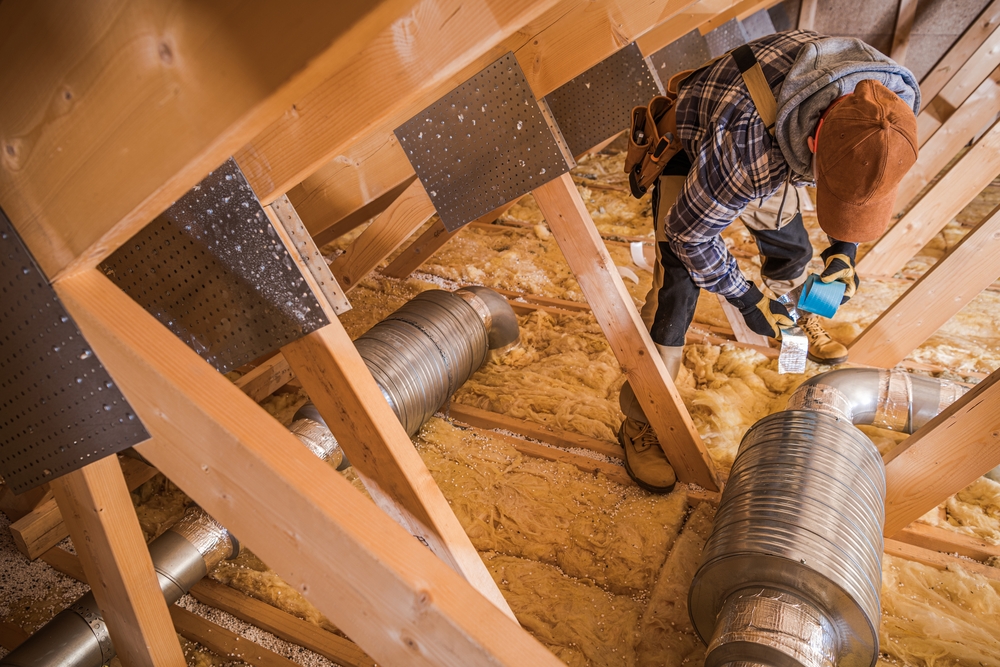Moisture In Your Attic: How to Prevent Water Damage from Condensation

Unexplained water in the home is never a good thing. When it’s in the attic or seemingly coming from the ceiling, it’s even more of a worry. While a leaky roof should always be your first concern, it’s not always the cause of the moisture.
So, what is attic condensation?
Attic condensation, also referred to as attic moisture, is the most common cause of moisture and dampness in the attic. This takes place when the heated air in the home below seeps up into the attic, and the water vapor in the air condenses on the cold surfaces in the attic. As a result, the attic can look wet, you can see signs of dampness on your ceiling, and it can even cause mold and rot.
How to Reduce Moisture in Your Attic
It’s important to address any moisture in your attic as soon as possible to avoid water damage. Long-term water damage on wooden structures (such as the attic floor or your ceilings below) is often irreversible, so you need to act quickly to solve the problem. Here are the best ways to reduce moisture and protect your home in the future.
- Check for leaks – Your first step is to make sure there isn’t a roof leak. A leaky roof is usually fairly obvious since there will be one area where the moisture gathers and it will be dripping from a specific place. It will also leak when it’s wet out, and clear up during periods of warm, dry weather. If you’re not sure, get an expert to inspect your roof.
- Ensure your roof is properly air sealed – We often talk about the benefits of air sealing in how it can keep you more comfortable (and reduce your energy bills), but it can also do wonders for your home. Since air sealing keeps the warm air in your home rather than allowing it to seep into your attic, your attic won’t be filling with the rising warm air that will then condensate up there.
- Consider an attic ventilation fan – Attic fans allow your attic to breathe, moving the air (and moisture) out from inside your attic. Attic fans extend your roof's life, ensure your attic stays moisture-free and even help reduce your energy bills.
- Ensure your dryer exhaust is outside – If your dryer is the kind that has a pipe for ventilation, rather than a condenser, you need to ensure you either put the ventilation hose out a window while it’s running or that the hose is properly connected to a fan in the wall.
- Don’t run humidifiers if your humidity level is good – Many people enjoy using humidifiers for fragrances, but if your home isn’t actually dry, you need to be careful about how often you run it. Remember, all the evaporated water has to go somewhere!
- Use a dehumidifier if your home is moist – Do you have fish tanks? Do you have bathrooms without ventilation fans? Any source of open or running water (even a drippy faucet can do it!) will cause a lot of moisture to be in the air of your home. While this is good for your airways, it’s not good for the structure of your home. Make sure you run a dehumidifier and try to keep the humidity level below 60% (the ideal humidity level is believed to be 40-50%).
- Check your ventilation fans are working properly – Ducts can become clogged and if there’s a lack of airflow, that means that the moisture isn’t getting moved out of the home.
- Open a bathroom window – If your bathroom does not have a ventilation fan, open the window when everyone is done showering for the morning/evening and leave it open for a few hours. This can be tempting to skip when it’s cold outside, but you must make sure you do so.
Prevent Attic Moisture in St. Paul, Minnesota
If you’ve found moisture in your attic and you live in the St. Paul area, our experts are here to help. Good home insulation, air sealing, and an attic fan can all help to ensure your home stays at the right temperature and your attic stays moisture-free. To learn more or to get a free estimate, click here.
Find Your Location


Get a quote


